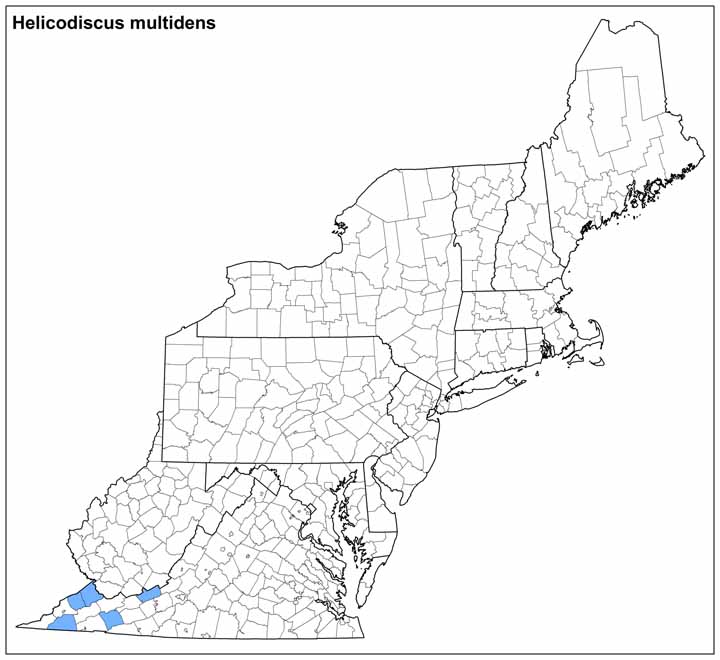Land Snails
.jpg)
Photo(s): A broken shell of Helicodiscus multidens, providing a cross-sectional view of the whorls, as well as the apertural lamellae (on the right). Image © Ken Hotopp.
Click photo(s) to enlarge.
Helicodiscus multidens (Hubricht, 1962)
Family: Helicodiscidae
Common name: Twilight Coil
Identification
Width: 4-5 mm
Height: 1.5-2 mm
Whorls: 4+
The disk-like shell of Helicodiscus multidens is adorned with fine spiral lirae and has an open umbilicus half the shell diameter. There are usually nine teeth in the final whorl – three sets, each with three teeth. Within each set of three are radial lamellae on the outer and basal walls, which are narrowly connected to each other, and across from a broad, curved tooth on the parietal wall. The aperture is rounded, with a simple lip.
Ecology
Helicodiscus multidens prefers calcium-rich environments, particularly caves (Hubricht, 1962). It also may be found on the undersides of rocks, especially limestone, and under leaf litter on wooded hillsides and river bluffs.
Taxonomy
Hubricht (1965) also described Helicodiscus enneodon, but later synonymized this species with H. multidens.
Distribution
Helicodiscus multidens is scattered in several counties across the Appalachian Mountains in Virginia and Tennessee. In Virginia it is known only from the western part of the state.
Conservation
NatureServe Global Rank: G3
NatureServe State Rank: Virginia, S2, Imperiled
Virginia’s wildlife action plan: Tier IV
Upland populations of H. multidens appear to be quite small and widely scattered. Most finds are represented by only a few shells, and some may be misidentifications. Snail surveys in southern Virginia caves may encounter additional colonies.
Meegan Winslow, Ken Hotopp 11/2012
Range Map (click to enlarge)


